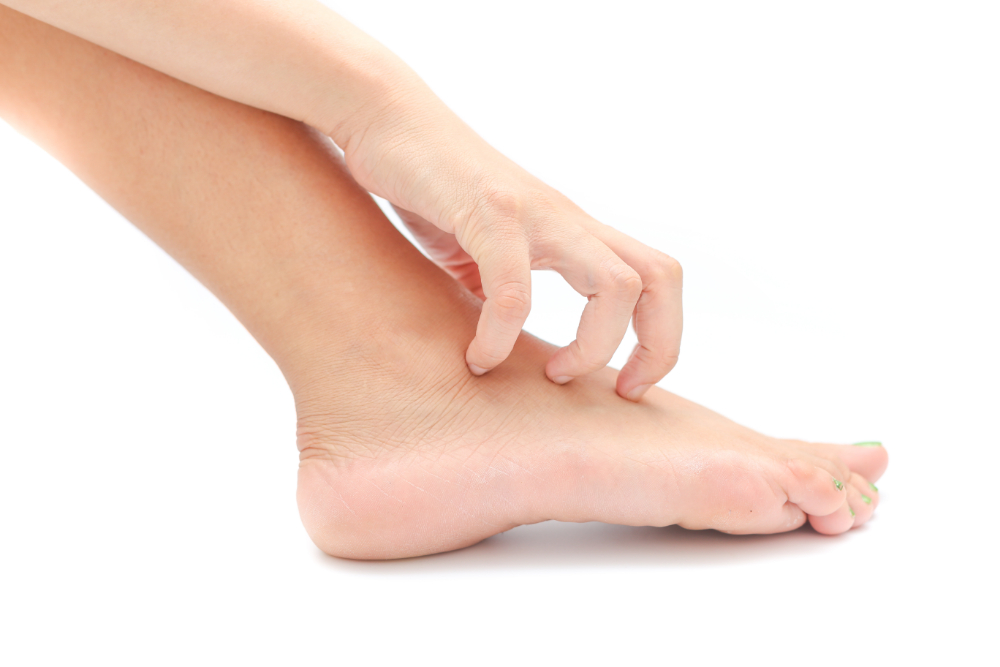Understanding Foot Allergies
When you think about allergies, the first things that come to mind are sneezing, itchy eyes, and running noses. What you may not consider is that it is possible to have foot allergies, and these are going to have different symptoms. The conditions are likely going to range from irritating to painful, but understanding what is happening is your first step for being able to take care of it.
Not All Allergies Are the Same
There are a variety of allergies that affect the feet, including allergic contact dermatitis (ACD), angioedema, and dyshidrotic eczema. All of these have unique root causes and may be treated differently.
Allergic contact dermatitis results from direct contact with certain kinds of substances, leading to irritation and inflammation. This is a common form of a foot allergy and will often cause itchiness in the impacted area.
Angioedema is a more serious form of the allergies that affect feet, and it is often noted by the growth of welts that are itchy and painful. Other symptoms of angioedema include abdominal cramping and even difficulty in breathing. This condition is often caused by shellfish, insect bites, and antibiotics, although there are other allergens that cause it as well.
Dyshidrotic eczema is more likely to occur if you have other allergies and is often marked with the formation of small, fluid-filled blisters. These blisters are itchy in nature and scratching them only leads to more itchiness and potentially infection. With dyshidrotic eczema, skin in the affected area will likely become red and flaky.
Diagnosing Foot Allergies
With a known allergen, it is easy to determine why you are having a reaction and perhaps even what course of action you will take to address the situation. If you aren’t sure, you can try home treatment options, but it is wiser to come into Sierra Foot & Ankle and have Victoria L. Melhuish, DPM, diagnosis it for you.
Finding Relief
There are treatment options for allergies that affect feet which you can do at home. If the condition has just happened and you know the source, use cool water and mild soap to wash away the substance that is causing the problem. If you are able to successfully remove all or most of it, this could help you avoid further symptoms.
Hydrocortisone cream is typically effective in dealing with minor rashes, so apply some to the affected area in accordance with the instructions provided on the box or tube. We may also prescribe an oral antihistamine to help your body treat the condition from the inside. Do not attempt to use an antihistamine lotion, however, as this could result in further skin irritation or cause an additional allergic reaction.
An Ounce of Prevention
After you know which allergens affect you specifically, it becomes easier to prevent foot allergies from occurring. At that point, it simply becomes a matter of avoiding those things that are within your control. If, for example, an additive in a particular detergent is determined to cause allergic reactions, simply switch brands or choose a dye-free version. The key to preventing allergic responses, though, is to make sure you properly identify them. Sierra Foot & Ankle can help you with this, so you do not have to endure preventable conditions that cause pain or discomfort.
If you have developed welts, redness, or itchiness in your feet that will not go away, schedule an appointment with Victoria L. Melhuish, DPM today. You can reach our Sierra Foot & Ankle practice at (775) 783-8037 and we will help you get you the relief you need.
Get In Touch
Address
2350 South Carson St
Suite 3
Carson City, NV 89701
Contact
Call: (775) 783-8037
Fax: (775) 782-3787
OPT-IN To Text:
By texting our office at
(775) 783-8037 from your mobile phone, you are consenting to receive SMS text messages from our staff. Reply STOP to unsubscribe.
*Read our Privacy Policy & Terms and Conditions.
Social




© Sierra Foot & Ankle. All Rights Reserved. Privacy Policy.
Web Design by CP Solutions. Marketed by VMD Services.

